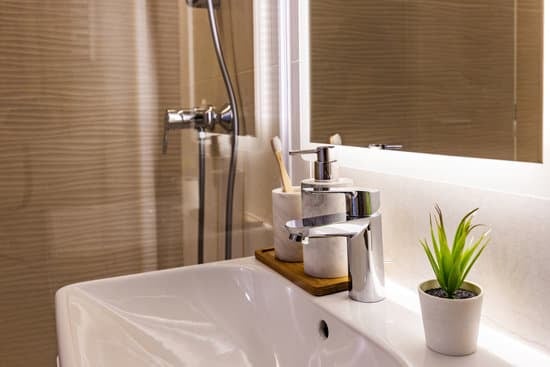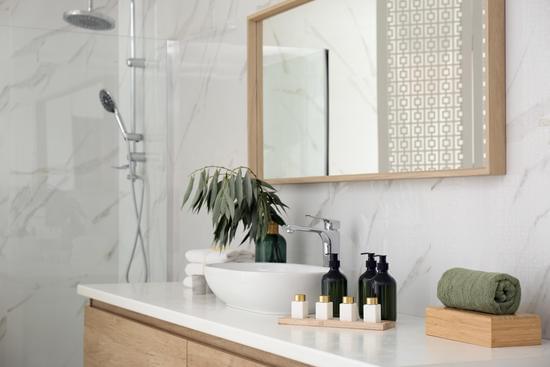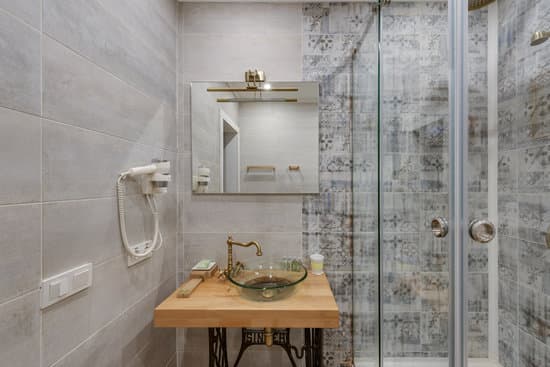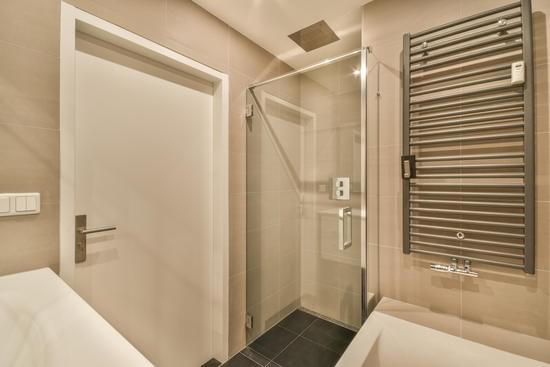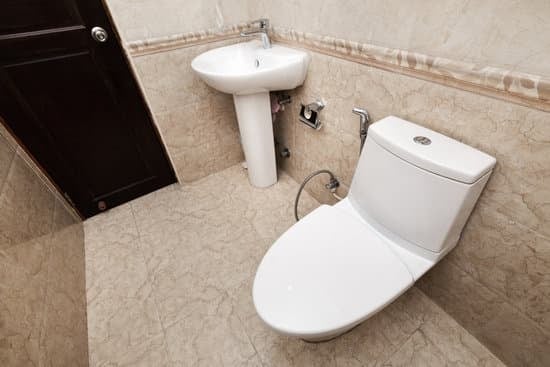Are you looking to add a stylish touch to your bathroom? Hanging a framed mirror can instantly elevate the look and functionality of your space. In this article, we will guide you through the process of hanging a framed bathroom mirror safely and securely. By following our step-by-step instructions, you’ll be able to create a beautiful focal point while ensuring stability and safety for everyone in your household. Let’s get started!
Gathering the Necessary Tools
Before you can hang a framed bathroom mirror, you’ll need to gather the necessary tools. Safety should always be your top priority when working with mirrors. Start by choosing the right mirror style that suits your bathroom decor. Consider the size, shape, and frame design that will enhance the overall look of your space. Once you have selected the perfect mirror, it’s important to find the right height for installation. Consider factors such as who will be using the mirror and their average height. The ideal height is usually around eye level or slightly above for easy use and maximum functionality. To complete this task safely, gather tools such as a tape measure, level, drill with appropriate drill bits, screws, anchors (if needed), and a pencil for marking measurements. With these tools in hand, you’re ready to move on to the next step of hanging your framed bathroom mirror securely.
Measuring and Marking the Wall
First, measure and mark the wall to ensure accurate placement. Safety is paramount when hanging a framed bathroom mirror. Start by choosing the right mirror size for your space. Consider the dimensions of your bathroom and the size of your vanity or sink area. A mirror that is too small can look disproportionate, while one that is too large may overwhelm the room. Next, determine the ideal height for your mirror. The general rule of thumb is to hang it at eye level, with the center of the mirror positioned about 5 feet above the floor. However, you may need to adjust this based on personal preferences and who will be using the mirror most frequently. Mark these measurements on the wall before proceeding to ensure proper installation and a secure mount.
Preparing the Mirror for Hanging
To prepare the mirror for hanging, make sure it’s securely mounted and ready to be installed. Follow these steps for a safe and successful installation:
- Mirror frame selection: Choose a sturdy frame that can support the weight of the mirror and withstand bathroom humidity.
- Cleaning and polishing the mirror: Before hanging, clean the mirror surface with a non-abrasive cleaner to remove any dirt or smudges. Polish it with a microfiber cloth to give it a sparkling finish.
- Inspect the mounting hardware: Check if the mirror comes with its own mounting brackets or if you need to purchase them separately. Ensure that they are in good condition and suitable for your wall type.
- Test the stability: Place the mirror on a flat surface and gently shake it to see if it wobbles or feels loose. If it does, adjust or tighten the mounting hardware before proceeding with installation.
By following these steps, you’ll have a well-prepared and secure bathroom mirror ready to hang in no time!
Mounting the Mirror on the Wall
Once you have selected a sturdy frame and ensured the stability of your mirror, it’s time to mount it securely on the wall. Safety is key when hanging a bathroom mirror, so make sure you choose the right hanging hardware. Look for heavy-duty D-rings or brackets that can support the weight of your mirror. When attaching the hardware to the back of the frame, use screws or nails that are appropriate for your wall type – such as drywall anchors if needed.
Before mounting the mirror, take some time to level it properly. Use a level tool and place it on top of the frame to ensure it is straight. If needed, adjust by adding shims behind one side of the frame until it is perfectly aligned.
By following these tips and taking necessary precautions, you can safely hang your framed bathroom mirror and enjoy its beauty in your space.
Ensuring Stability and Safety
Ensuring stability and safety is crucial when mounting a mirror on the wall. To prevent accidents and ensure proper weight distribution, it is important to choose the right hanging hardware. Start by determining the weight of your bathroom mirror and select appropriate hardware that can support its load. Look for heavy-duty hooks or brackets specifically designed for mirrors. Make sure to secure them firmly into studs or use wall anchors if needed.
When installing the mirror, evenly distribute its weight across multiple hooks or brackets to minimize strain on any single point. This will help maintain stability and prevent the mirror from tilting or falling off the wall.
Remember, safety should always be a priority when hanging a framed bathroom mirror. By ensuring proper weight distribution and choosing the right hanging hardware, you can enjoy your reflection without any worries about stability or accidents occurring.
Conclusion
In conclusion, hanging a framed bathroom mirror is a simple task that can be easily accomplished with the right tools and preparation. By following the steps outlined in this article, you can ensure that your mirror is securely mounted on the wall, providing stability and safety. So grab your tools, measure carefully, and enjoy the beautiful addition to your bathroom decor in no time.

